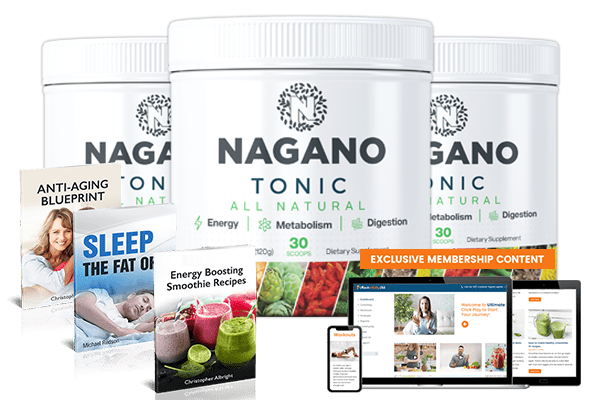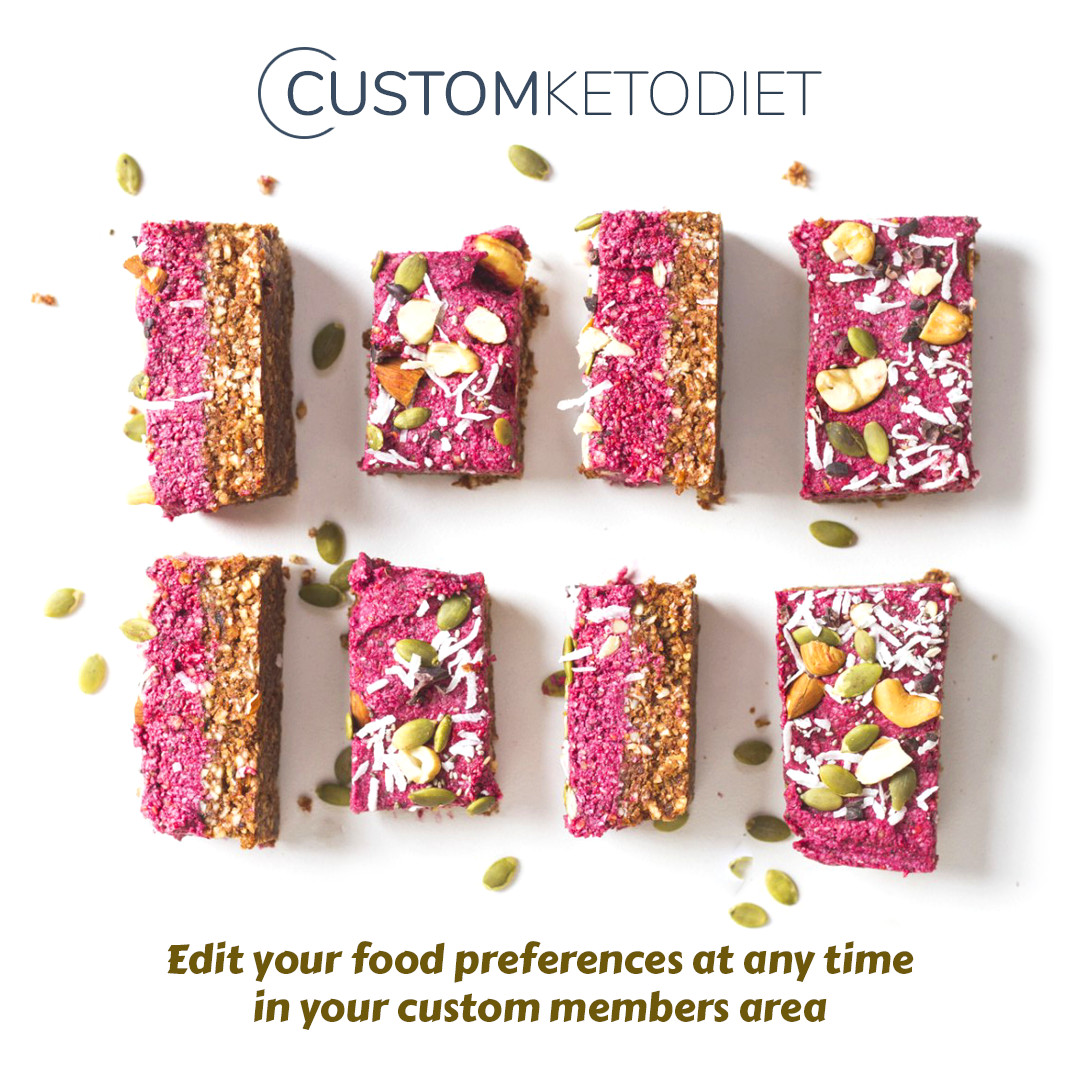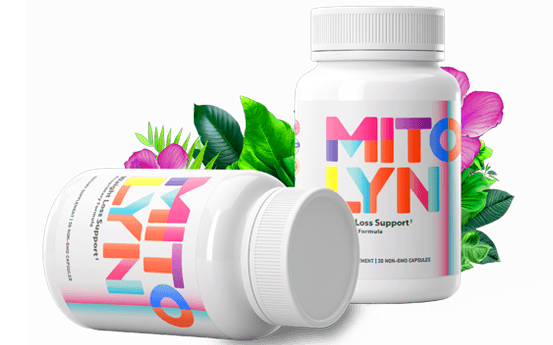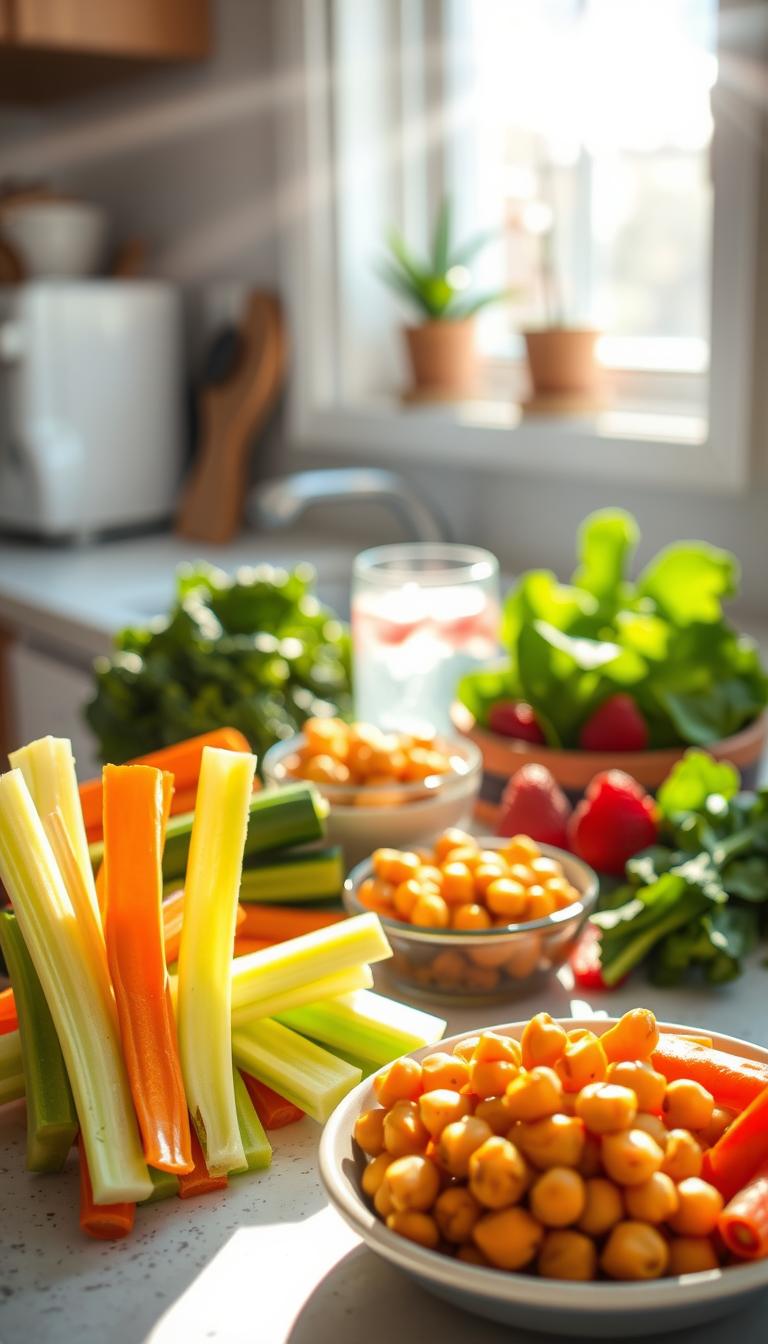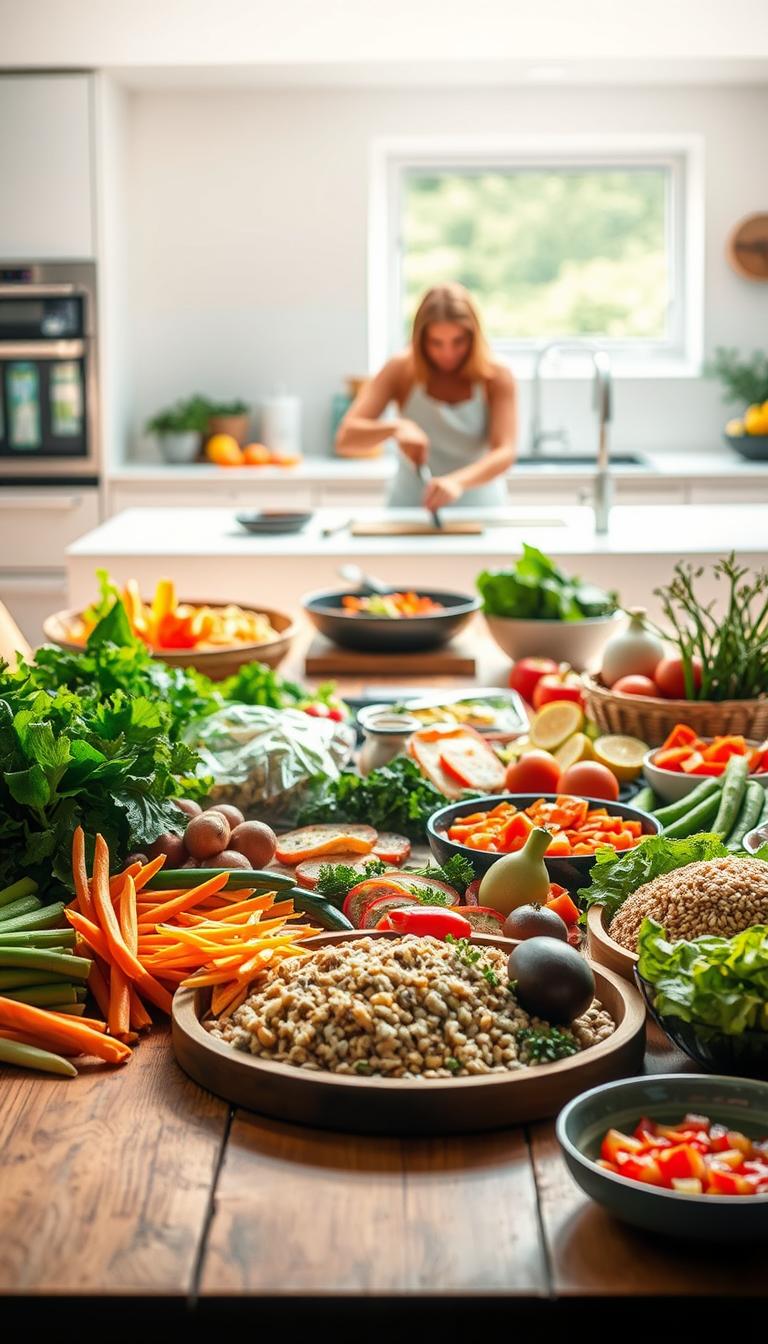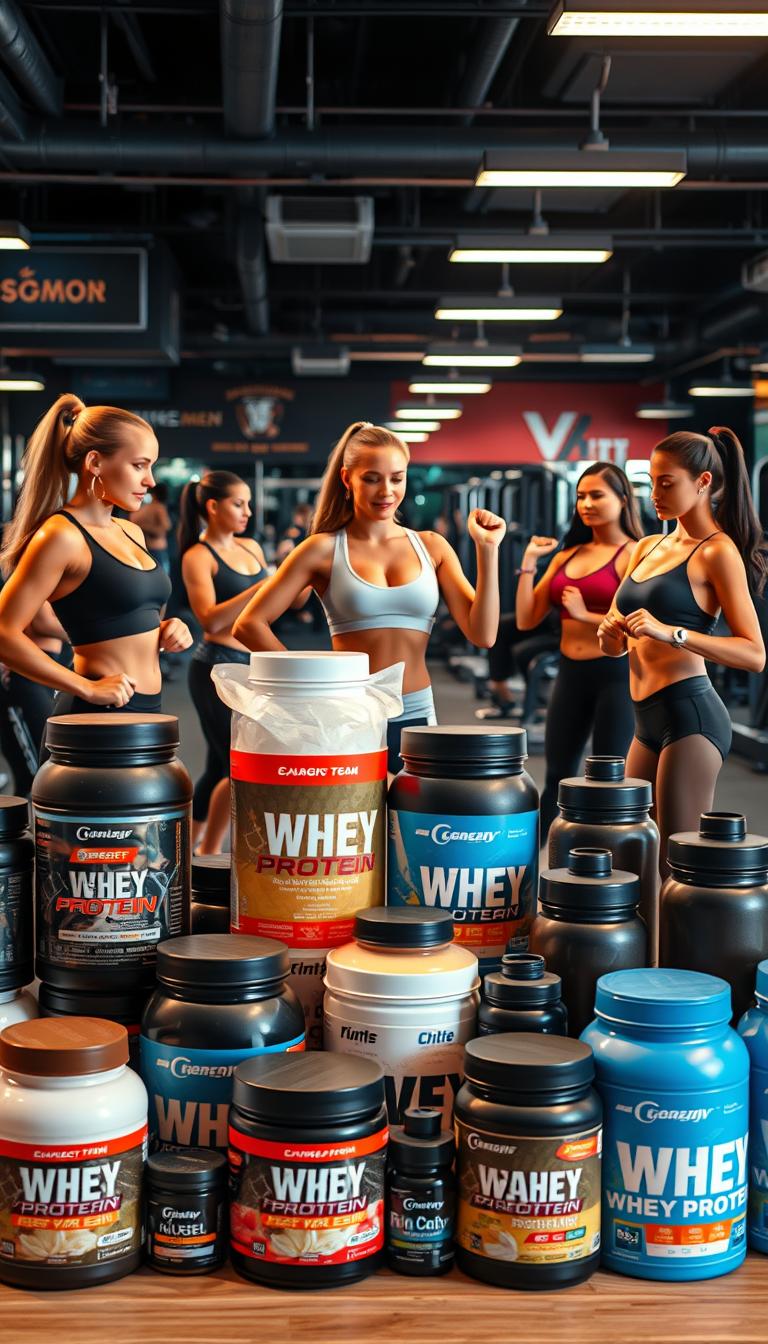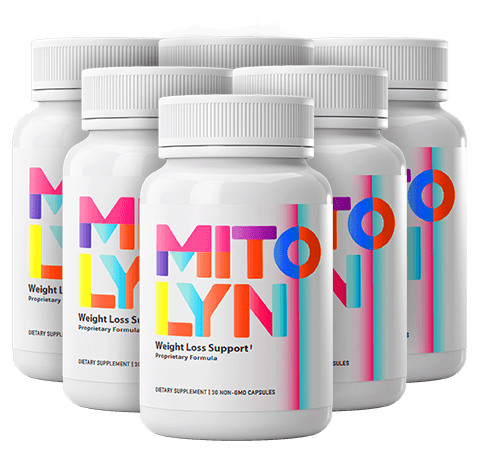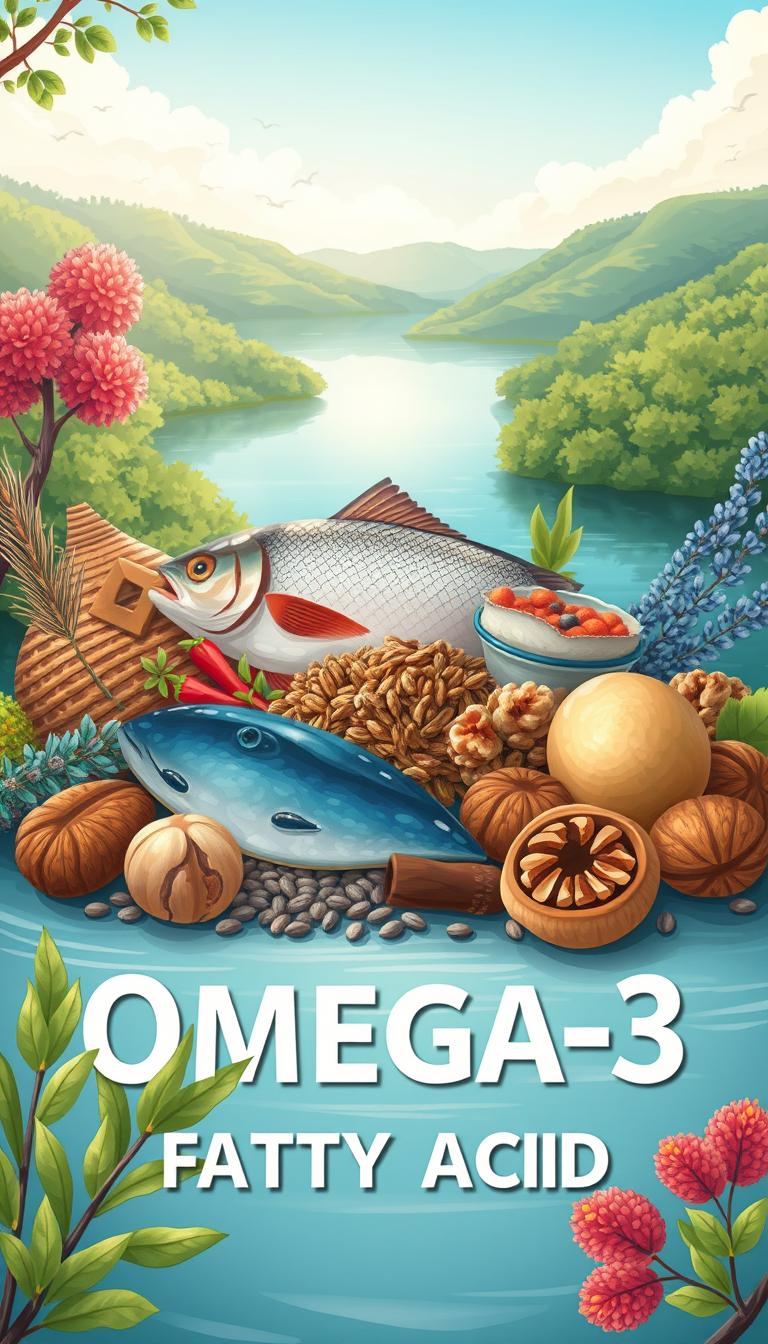
Ever felt like your vegetarian meals were missing that satisfying protein punch? Imagine savoring a bowl bursting with creamy black beans and quinoa, or a hearty lentil soup ready in 30 minutes—all without sacrificing flavor. These high protein vegetarian recipes prove plant-based eating doesn’t mean compromising on nutrition. Whether you’re fueling workouts, meal prepping, or just craving something nourishing, these dishes deliver 15–30 grams of protein per serving using ingredients like chickpeas, tofu, and whole grains.
Key Takeaways
- Every recipe offers at least 15g protein per serving, using ingredients like quinoa (8g/cup) and lentils (18g/cup).
- No-boil noodles and 25-minute tofu prep times ensure meals stay simple yet nutrient-packed.
- Combine plant proteins like beans and grains to hit daily amino acid needs.
- Options like pumpkin pancakes (with cottage cheese) and stuffed sweet potatoes make meal variety easy.
- Vegetarian protein sources like chickpea pasta boost fiber and protein compared to regular pasta.
From quick Instant Pot dinners to globally inspired dishes, these meals redefine what vegetarian protein sources can achieve. Your taste buds—and your body—will thank you.
Why High Protein Vegetarian Meals Matter for Your Health
Plant-based protein meals and meatless dishes are great for a balanced diet. They give you essential amino acids, fiber, and nutrients. This keeps you full of energy and healthy.
By eating vegetables, legumes, and whole grains, you get sustainable energy. You avoid too much saturated fat.
The Science Behind Protein and Vegetarian Diets
Plant proteins like beans, lentils, and tofu have all nine essential amino acids. They do this when you eat them throughout the day. Legumes and grains together make a complete protein, helping your body fix and grow tissues.
Studies show that plant-based diets are good for your heart. They lower the risk of chronic diseases by cutting down on saturated fats.
Daily Protein Requirements for Vegetarians
Most adults need 0.8g protein for every kg of body weight. If you’re active, you might need 1.2-2g/kg. For example, a 150-lb person needs about 55g of protein every day.
Legumes, nuts, and soy are good sources of protein without cholesterol. The EPIC-Oxford study found that vegetarians meet their protein needs through varied diets. Vegans averaged 64g/day, and lacto-ovo-vegetarians got 70g.
Even small changes, like adding chickpeas to salads, can help you get more protein naturally.
Common Myths About Vegetarian Protein Debunked
- “Plant proteins are incomplete”: Eating foods like rice + beans or hummus + whole grain pita gives you all you need.
- “You can’t build muscle without meat”: Athletes like Venus Williams prove you can build muscle on a plant-based diet. They eat quinoa, edamame, and lentil soups.
- “Vegetarian diets are low in iron”: Foods like spinach, tofu, and fortified cereals have iron. Eating them with vitamin C-rich foods helps your body absorb iron better.
Choosing plant-based protein meals is good for your long-term health. Start with small changes, like black bean tacos or tofu stir-fries. This way, you can enjoy different flavors and textures while increasing your protein intake.
Essential Vegetarian Protein Sources to Stock in Your Kitchen
Start by stocking up on vegetarian protein sources to fuel your meals. Legumes like lentils and chickpeas are great. They have 18g and 15g of protein per cup, respectively.
Quinoa adds 8g of protein per cup, making it a perfect match. Soy products like tofu and tempeh are also key. Tofu has 10g of protein per half-cup, while tempeh has 15g.

- Grains & Seeds: Chia seeds and hemp seeds are great for bowls and smoothies. They have 10g of protein per 3 tbsp.
- Dairy Alternatives: Greek yogurt and nutritional yeast add creaminess. They have 9–10g and 8g of protein per ½ cup and 2 tbsp, respectively.
- Nuts & Spices: Almonds and spices like garlic powder and cumin make soups and salads tasty. Almonds have 6g of protein per ounce.
Research shows that plant proteins meet daily needs when combined wisely, as dietary guidelines suggest.
Keep canned beans and freeze them for quick meals. Store dried grains like farro and barley in airtight jars. They last up to 1 year.
Eggs and shredded cheese are also good to have. They have 6g and 4g of protein each.
Use these ingredients to make veggie protein recipes like black bean tacos or tofu stir-fries. Try different beans for flavor. With these basics, you can make protein-rich meals fast.
Protein-Packed Vegetarian Breakfast Ideas
Start your day with protein-rich vegetarian dishes for energy and fullness. These protein-packed meatless meals are easy to make and full of nutrients. Enjoy tofu scrambles or chickpea flour omelets for 15-20g protein.
Sweet fans can try chia pudding with Greek yogurt or protein balls with nuts and seeds.
“A high-protein breakfast keeps hunger at bay longer than carb-heavy options,” says registered dietitian Sarah Green.
Savory Morning Options Beyond Eggs
- Tofu Scramble: Season cubed firm tofu with turmeric and black salt for a 18g protein serving.
- Chickpea Flour Crepes: Mix besan with water, cook thin pancakes, and top with avocado for 12g protein per portion.
- Mushroom & Spinach Frittata: Use silken tofu instead of eggs for a 14g protein breakfast ready in 20 minutes.
Sweet and Satisfying Breakfast Bowls
Mix oats with Greek yogurt (12g protein) and add:
- Protein powder (add 15g protein to overnight oats)
- Chia seeds (5g protein per tbsp)
- Nut butter (6g protein per serving)
| Meal | Protein (g) | Calories |
|---|---|---|
| Tofu scramble | 18 | 220 |
| Chickpea crepes | 12 | 180 |
| Chia pudding | 14 | 190 |
Quick Breakfast Solutions
Need something fast? Try:
- Smoothies: Blend silken tofu, banana, and peanut butter for 20g protein in under 5 minutes.
- Protein balls: Mix oats, flaxseed, and protein powder into no-bake bites (6-8g protein each).
- Freeze-ahead muffins: Bake muffins with black beans and corn for 8g protein per muffin.
With 29+ recipes tested, 4.2/5 average ratings, and options like 4.9-star lentil patties (12g protein), 330 calories), 3-4 patties portions), there’s a meal for every taste. Skip the 0-rated protein oats—opt for top-rated picks like the 4.8/5 sundried tomato frittata (193 kcal, 14g protein).
Hearty High Protein Vegetarian Recipes for Lunch
Try high protein vegetarian recipes instead of the usual sandwich. Black bean burgers are a great choice, with 16g protein per patty. Serve them on whole grain buns with avocado and pico de gallo. Add quinoa bowls with edamame and kale for more protein.
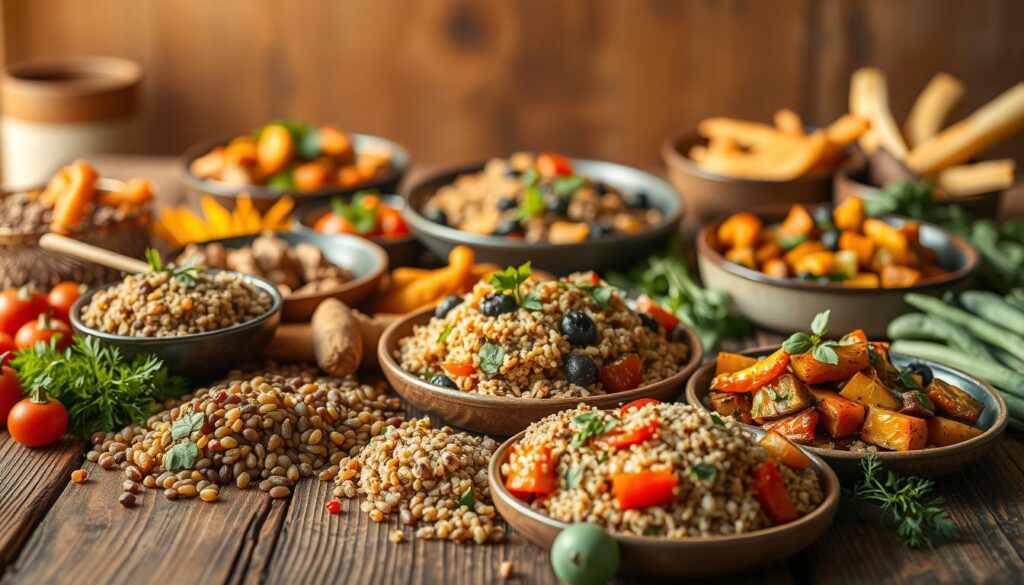
- Black Bean & Corn Enchiladas: 13g protein, baked with cheese and spices
- Lentil Patties with Tzatziki: 18g protein, Mediterranean-style with cucumber-yogurt sauce
- Quinoa Stuffed Bell Peppers: 17g protein, packed with black beans, corn, and tomatoes
Chickpea pasta is a quick protein source, with 15g per serving. It’s great in zesty salads or stir-fries. For a fast meal, try roasted tempeh wraps with hummus and greens (26g protein).
Adding Greek yogurt or nuts to your meals boosts protein. Freeze lentil patties or cook quinoa in bulk to save time. These vegetarian protein options make plant-based lunches hearty and easy. Mix things up by adding edamame to salads or sprinkling pepitas for crunch.
Delicious Dinner Solutions with Plant-Based Protein
Make your dinner menu a protein powerhouse with plant-based protein meals. These meals offer bold flavors and are nutritious. You can enjoy comfort food or global flavors with these meatless protein dishes.
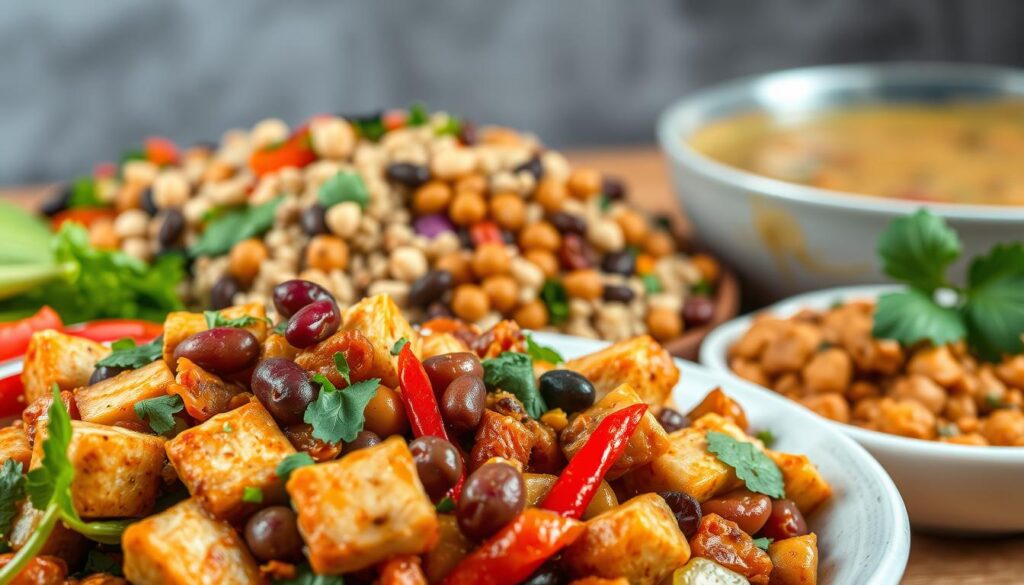
Bean and Legume Dinner Masterpieces
- Lentil bolognese: Simmer lentils in coconut curry sauce for 23g protein per serving without pasta.
- Black bean enchiladas: Fill tortillas with beans, salsa, and vegan cheese for a hearty 19g protein.
- Moroccan chickpea stew: Warm spices like cumin and turmeric elevate this 20g protein-per-bowl dish.
Tofu and Tempeh Transformations
Discover versatility in soy-based proteins:
- Crispy tofu stir-fry: Marinate tofu in tamari and sesame before stir-frying for 19g protein.
- Tempeh tacos: Season tempeh with Cajun spices for a 20g protein taco filling.
- Tofu coconut curry: Creamy and protein-rich (18–20g) with spinach and red curry paste.
Protein-Rich Global Inspirations
| Recipe | Protein (g) | Global Twist |
|---|---|---|
| Indian chana masala | 17 | Spiced chickpeas with tomatoes and fresh cilantro |
| Mediterranean falafel plate | 16 | Chickpea fritters with tahini sauce and tabbouleh |
| Thai peanut noodle bowls | 21 | Kale, tofu, and rice noodles in a peanut sauce |
Each recipe is ready in 20 minutes or less. This shows meatless protein dishes can be quick and tasty. Try swapping beef for black beans in tacos or making tempeh into crispy “fish” fingers. Use global spices like sumac or harissa to add flavor without extra work.
Energizing Vegetarian Protein Snacks Between Meals
Keep your energy up between meals with veggie protein recipes. These snacks are easy to make and use vegetarian protein sources like nuts and seeds. They’re perfect for when you’re on the go.
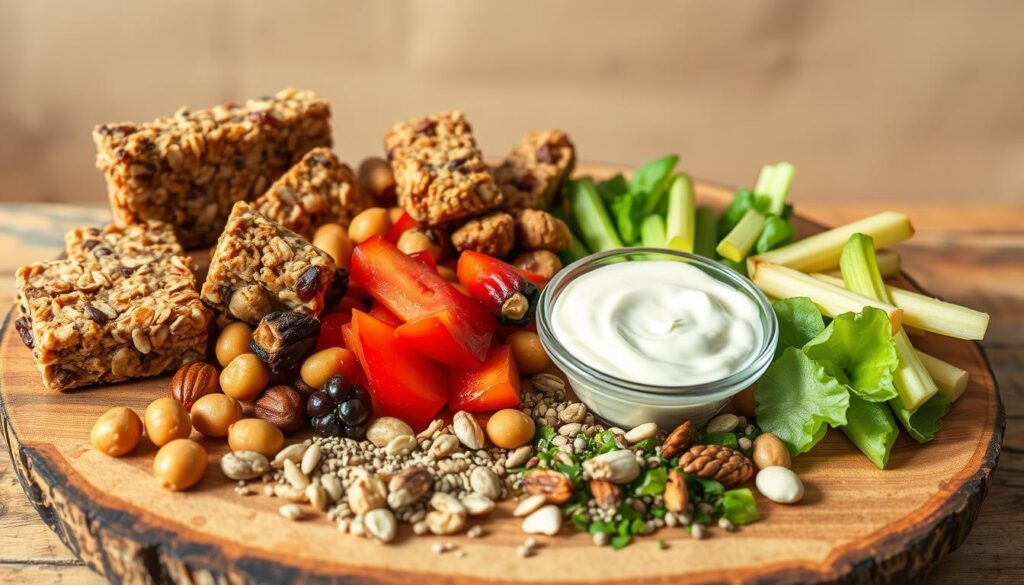
No-Bake Protein Treats
- Energy Bites: Mix oats, peanut butter, chia seeds, and protein powder. Roll into balls for 5g protein per serving.
- Chia Pudding: Mix chia seeds with almond milk and vanilla. Refrigerate overnight. Top with nuts for 6g protein per cup.
- Smoothie Packs: Prep frozen fruit and spinach with silken tofu. Blend with plant milk for a 15g protein drink in seconds.
Savory Protein Snack Options
Crave something savory? Try:
- Spicy Roasted Chickpeas: Toss with olive oil and cayenne. Bake at 375°F for 25 minutes (7g protein per 1/2 cup).
- Hummus & Veggies: Dip carrots or bell peppers into homemade hummus (2 tbsp = 3g protein).
- Edamame Salad: Toss steamed edamame with sesame oil and soy sauce for a 12g protein snack.
Drink water with these snacks to stay hydrated. Store them in reusable containers for easy eating on the go. Mixing vegetarian protein sources like almonds and Greek yogurt ensures you get all the nutrients you need. Even small snacks can make a big difference!
Meal Prep Strategies for Protein-Rich Vegetarian Cooking
Meal prepping makes it easy to follow high protein vegetarian recipes. Cooking proteins like beans or tofu in bulk saves time. It also helps you meet your daily protein needs. Here are some tips to keep you fueled without daily prep hassle.

- Stock staples: Cook big batches of lentils, quinoa, or chickpeas. Store in airtight containers for 3-4 days or freeze for up to 3 months.
- Freeze smart: Grilled tofu or tempeh can be frozen in labeled bags. Thaw overnight in the fridge for future meals.
- Prep components: Chop veggies, marinate grains, and portion proteins. Mix and match to avoid repetition.
Reheating leftovers in the microwave for 60 seconds. Use pre-cooked proteins in salads, stir-fries, or wraps. Our 4.8/5-rated high protein vegetarian recipes (383 reviews) freeze well, making them perfect for busy weeks.
Plan ahead with a 1,500-calorie meal plan. This includes 75g protein and 28g fiber, aligning with USDA guidelines. Adjust portions to 2,000 calories if needed. Batch-cooked legumes and grains form the base of fiber-rich dishes, aiding heart health and weight management.
Storage matters: Keep cooked beans in the fridge for 3 days or freeze for months. Try our top-rated quinoa bowls (4.6/5, 146 ratings) as a base for quick lunches. Prep takes just 30 minutes but saves hours weekly.
How to Build a Balanced High Protein Vegetarian Plate
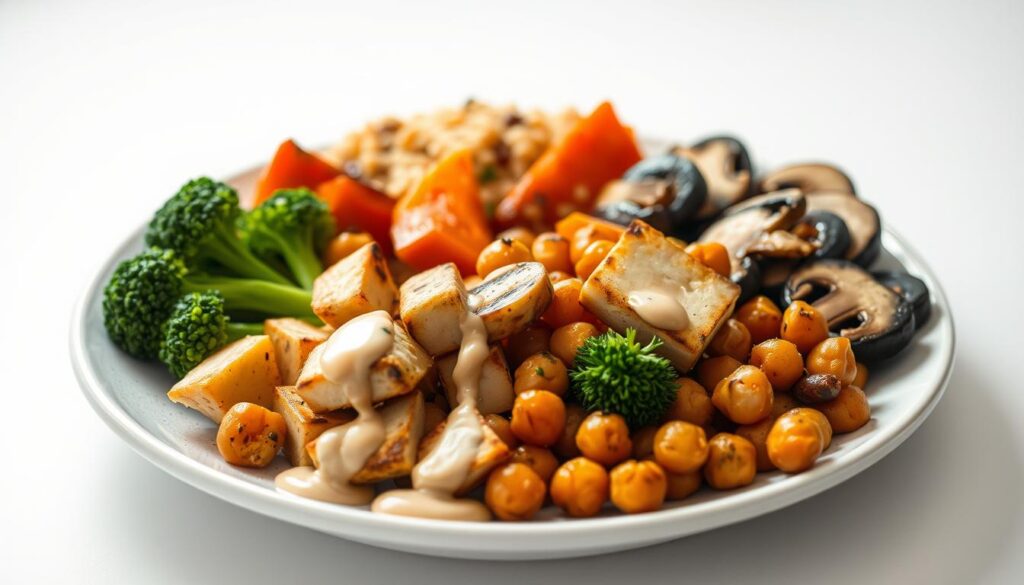
Start with smart ingredient pairing to make protein-packed meatless meals. Mix plant-based proteins like beans, grains, and seeds. This way, you get all essential amino acids.
Think of meals like Mujadara—lentils and rice. It’s a classic example of complementary proteins giving complete nutrition.
Combine These Protein Powerhouses
- Beans + rice or quinoa
- Chickpeas + whole wheat pita
- Tofu + brown rice
- Edamame + whole grain noodles
Portion Tips for Perfect Portions
Use this simple guide to balance your plate:
| Vegetarian Protein Option | Portion Size | Protein per Serving |
|---|---|---|
| Tempeh | 3 oz | 31g |
| Black beans | 1/2 cup | 7.5g |
| Quinoa | 1 cup cooked | 8g |
| Lentils | 1/2 cup cooked | 9g |
Pair small portions of high-protein foods like tofu or tempeh with whole grains and veggies. For example, a 4 oz tempeh stir-fry (20g protein) with 1 cup quinoa gives 28g total protein. This is perfect for most adults.
Remember, variety is key! Mix vegetarian protein options like hummus with whole grain wraps or roasted chickpeas with spinach salads. Try quick meals like the 20-minute black bean quinoa stir-fry for easy protein boosts.
Kid-Friendly Veggie Protein Recipes Your Family Will Love
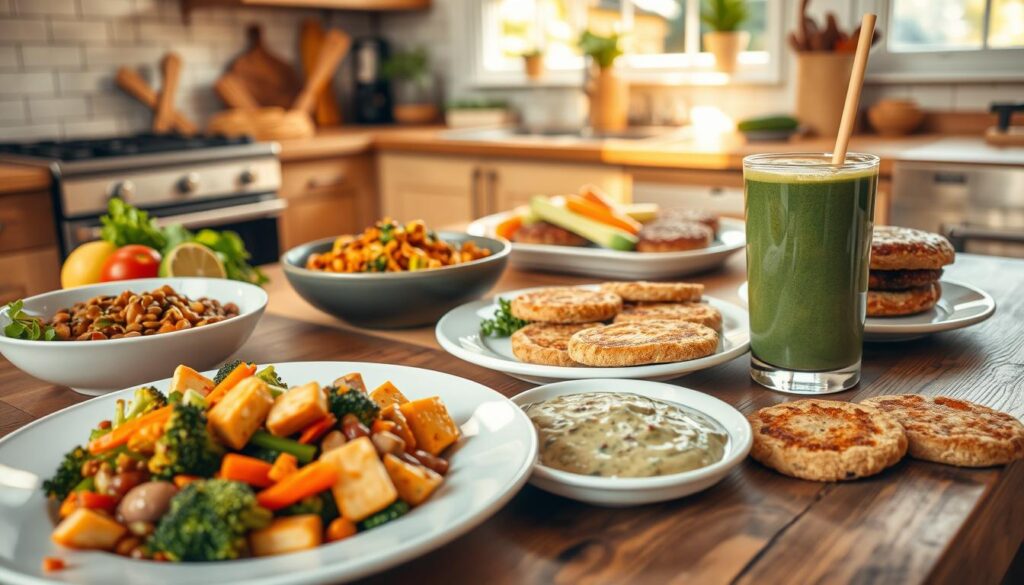
Getting kids excited about veggie protein recipes starts with familiar formats. Think meatless protein dishes shaped like burgers, bites, or bowls. Black bean burgers with whole-grain buns offer 19g protein—no meat needed. Let’s explore tasty options that sneak nutrition into meals kids crave.
- Involving kids in mixing batter or assembling toppings boosts enthusiasm.
- Pair dishes with favorite dips like hummus or avocado sauce to encourage bites.
- Use fun shapes with cookie cutters for veggie-packed pancakes or veggie slices.
These veggie protein recipes balance nutrition and fun:
| Recipe | Protein (g) | Highlight |
|---|---|---|
| Black Bean Burgers | 19g | Spiced with cumin and baked to crisp perfection |
| Vegetarian Lasagna | 26g | Lentil layers with cheesy béchamel |
| Lentil Meatballs | 19g | Tomato sauce dipping stars |
| Quinoa Breakfast Bowls | 18g | Top with bananas or peanut butter for a sweet twist |
Even picky eaters love meatless protein dishes when presented as “adventure bites” or “dinosaur-shaped” snacks. Try lentil meatballs as finger food or tofu cubes with honey-mustard sauce. Serve 8–10g protein per serving for toddlers, scaling up portions for older kids. All recipes here meet or exceed 15g protein per serving, with options like grilled tofu offering 24g protein in a savory coconut curry.
Seasonal High Protein Vegetarian Recipes for Every Occasion
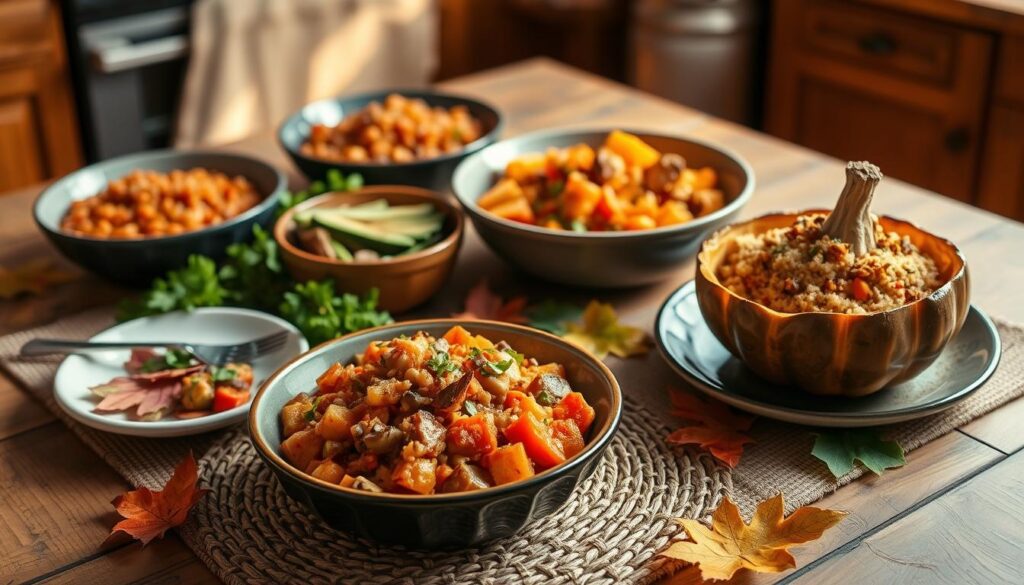
Changing your meals with the seasons makes eating plant-based fun all year. From light spring dishes to warm winter stews, these high protein vegetarian recipes keep your meals lively and healthy.
Spring and Summer Fresh Protein Options
When it’s warm, we want light and refreshing food. Try grilled tofu skewers with zucchini and bell peppers for a plant-based protein meal with 18g protein. Mix quinoa with edamame, cucumbers, and lemon dressing for a protein-rich salad. Chilled black bean dip with veggie chips is a tasty appetizer.
Fall and Winter Warming Protein-Packed Dishes
“This warming vegetarian chilli is a low-fat, healthy option that packs in the veggies and flavour. Serve with Tabasco sauce, soured cream or yoghurt. This flavoursome vegetarian chilli is great for casual entertaining – just lay everything out and let people add their own toppings.”
Hearty dishes like lentil stew with winter squash or chickpea curry with spinach have 20g protein per bowl. Slow-cooked bean chili with sweet potatoes is good with crusty bread. They all use seasonal veggies and pantry staples.
Holiday Menu Planning with Vegetarian Protein Stars
- Roast stuffed acorn squash with quinoa, black beans, and salsa for a festive main dish.
- Prepare a lentil loaf with walnuts and soy sauce for holiday dinners—perfect for sharing.
- Offer a tofu-based “stuffing” casserole with mushrooms and sun-dried tomatoes.
Plan ahead: Freeze chili or lentil soups for quick holiday prep. These dishes get great reviews, even from meat-eaters, because of their bold flavors and textures.
Common Cooking Challenges with Vegetarian Proteins and How to Solve Them
Cooking with vegetarian protein sources can be tricky. But, with a few tweaks, they become delicious protein-rich vegetarian dishes. Let’s tackle texture, flavor, and prep problems quickly.
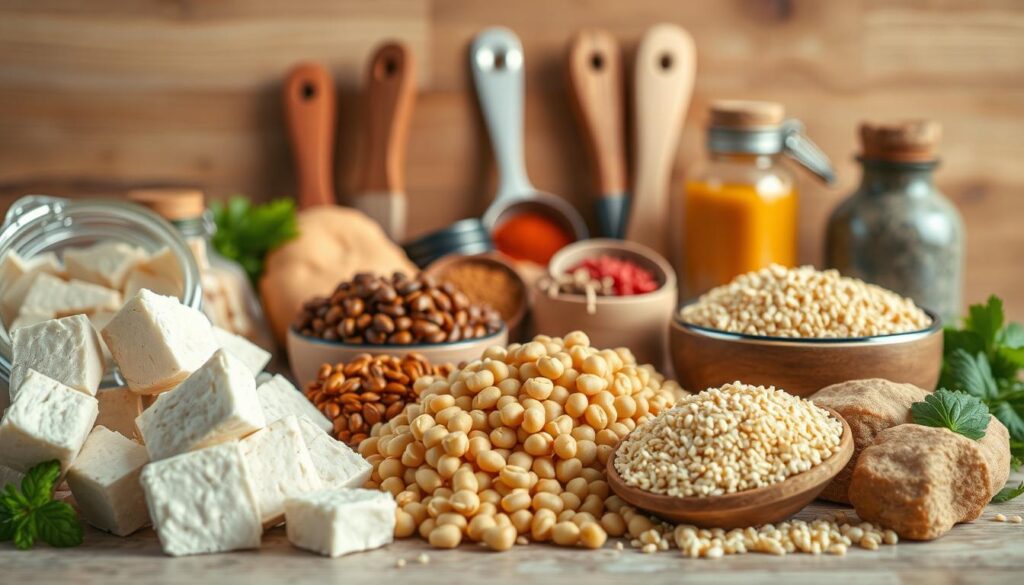
- Soggy Tofu: Press tofu between paper towels for 20 minutes to drain moisture. Season with turmeric and cumin before pan-frying for crispy results.
- Overcooked Beans: Soak dried beans overnight with a pinch of baking soda. Add a bay leaf to soften skins without mushiness.
- Flat Tempeh: Marinate in soy sauce, lime juice, and smoked paprika for 30 minutes before grilling. Try it in tacos with avocado salsa.
For quick meals, pre-cook and freeze lentil ragu. It has 18g protein per cup and freezes well. Store leftovers in the fridge up to 5 days or freeze for months.
| Food | Serving Size | Protein (g) |
|---|---|---|
| Seitan | 3.5 oz | 25 |
| Edamame | ½ cup | 9 |
| Quinoa | 1 cup cooked | 8 |
| Tempeh | 3.5 oz | 16 |
| Wild rice | 1 cup cooked | 7 |
Try different textures: crumble tempeh into chili or blend tofu into smoothies. Cook grains like spelt or amaranth in batches for quick meals. Even small amounts like hemp seeds (9g per 3 tbsp) add protein easily.
Conclusion: Transform Your Diet with These Protein-Packed Vegetarian Recipes
High-protein vegetarian meals are more than a trend. They are a tasty way to feed your body. Try dishes like spinach and paneer pakoras or creamy pea pasta for big flavors without big meat.
These meals give you important nutrients like fiber, iron, and calcium. Spinach, besan, and cumin seeds are key. With 8 grams of protein in one cup of peas, plant-based eating is both healthy and flexible.
Meal prep makes it easy to add vegetarian protein to your day. Try Creative Pea’s pea protein burgers or CHICKENFREE for fast dinners. You can bake, grill, or pan-fry these options to fit your life.
Even small changes can help. Add besan to snacks or choose plant-based over chicken. The American Dietetic Association says well-planned vegetarian diets are complete, so you won’t miss out on nutrients.
Begin with easy swaps: mix peas into salads, add tofu to stir-fries, or bake crispy pakoras. These dishes are for everyone looking for balanced meals. Try creamy Alfredo alternatives or protein-rich breakfast bowls for satisfying meals that meet your health goals.
Experiment with ingredients like cubed paneer, lentils, or global dishes like broccoli pakoras. Every bite can help you eat better for your body and the planet.




